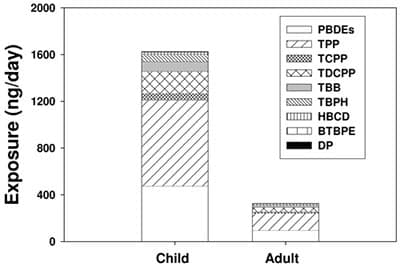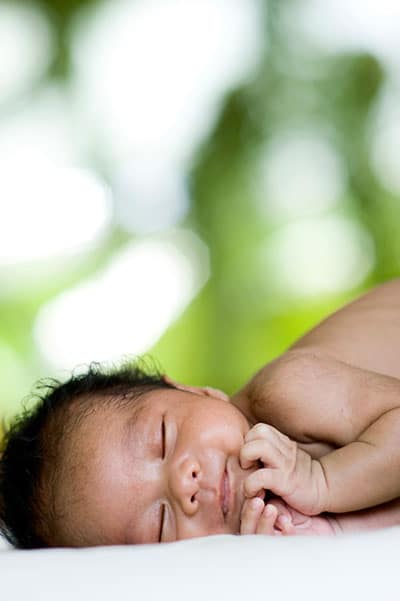It’s important that babies sleep on a healthy, safe crib mattress. Learn why.
Chemical Exposure & Developing Brains
Tiny babies sleep for 14-18 hours per day and their brain development is so rapid that 70% of adult brain growth is achieved by age two. Not only are babies busy developing in extraordinary ways, but during their earliest years they are also exceptionally vulnerable to toxins in their environment.
What does this have to do with your baby’s crib mattress? Evidence is gathering that environmental chemical exposure may be behind many developmental brain disorders.
For many years, worrying reports on several industrial chemicals have come from researchers who study their presence in human tissue, blood, and breast milk. There are strong indications from major institutions, including the Harvard School of Public Health, that some neurodevelopment disorders, such as autism and ADHD, may be related to the “silent pandemic” of chemicals in our indoor and outdoor environments.
Medical News Today also discusses this topic and that awareness of these environmental factors is key. Parents are then able to make certain adjustments at home to minimize potential toxins from entering the home.
Types of Flame Retardants
One category of common household chemicals that has raised unambiguous red flags is chemical flame retardants.
A recent study examined how a significant source of cumulative exposure to chemicals, including flame retardants, is house dust. Startlingly, children consume FIVE TIMES the amount of house dust as adults do. So right from birth, living in an average home, the youngest family members are dealing with the heaviest chemical exposure.
Many parents would love to tuck their baby into a protective bubble that prevents anything toxic from getting anywhere near, ever. We feel just the same. Yet we all live in the real world and as safe as we may yearn to be, perfect protection is not possible. However, introducing organic and natural products into the home can make a big difference!

Estimated daily dust ingestion for a child and adult
”…levels of these organophosphate flame retardants are comparable, or in
some cases, greater than, levels of PBDEs in house dust. The high prevalence
of these chemicals in foam and the high concentrations measured in dust (as
high as 1.8 mg/g), warrant further studies to evaluate potential health effects
from dust exposure, particularly for children.”
Environ Sci Technol. 43(19): 7490–7495
Reducing Your Child’s Chemical Exposure
So how can you reduce your child’s regular exposure to risky chemicals? There are many options but an organic baby mattress is an especially clear choice due to the number of hours babies sleep.
The Savvy Baby™ organic crib mattress is made from organic Dunlop latex that is in a quilted casing of organic cotton fabric with organic wool batting. The wool batting inside the casing serves as a natural flame retardant.
We also offer the Savvy Baby™ Talalay crib mattress which is made of natural Talalay latex inside of Dunlop.
Both crib mattresses are GOTS-certified organic for your peace of mind.
